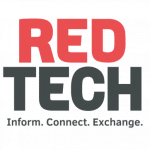NAIROBI, Kenya — A recent studio refit at Radio 47 in Nairobi showcases how smart infrastructure choices can directly enhance content creation, improve workflows and help a station evolve into a modern media hub.
Radio 47 is among a growing number of African broadcasters embracing IP-native architecture as a means of future-proofing their operations.
But its latest project — spearheaded by systems integrator Kigali, Rwanda-based Mediacity Ads Ltd. and involving a full deployment of Genelec’s Smart IP loudspeakers — takes this commitment further. According to Fred Martin Kiwalabye, director of Mediacity Ads, Radio 47 had a very clear vision from the outset. “They wanted a future-ready, IP-centric media operation, and Genelec’s Smart IP loudspeakers were a natural fit,” said Kiwalabye.
According to Cape Media, the owner of Radio 47, the goal of the refit was not just to install newer equipment but to improve radio quality. That meant providing presenters, producers and technicians with tools that are more intuitive, consistent and reliable, and that do not hinder the creative process.
All-IP, from the ground up
The entire setup of the new Radio 47 studio is IP-based, built on AES67 and Ravenna protocols. Genelec’s Smart IP monitors integrate smoothly into this system, synchronized with Lawo consoles, Telos Omnia processors and WinMedia’s automation system and WinCam visual radio engine through a central Ravenna domain clock. “Every element, from mixing to loudspeaker playback, is done over IP,” said Kiwalabye. “That streamlined not just the installation but the daily operation too.”
The result is a lean, high-performance system that eliminates analog cabling, bulky converters and complex signal chains, allowing the station to reclaim space in its compact control rooms and reduce maintenance demands.
One of the main technical challenges in the refit was achieving consistent acoustic performance across three studios of different sizes and surface materials. Full physical treatment was not always feasible due to architectural constraints. Genelec’s Smart IP Manager software played a crucial role in resolving this issue.
“We measured and adjusted each speaker to match its room’s acoustic profile,” Kiwalabye explained. “This included compensating for reflective surfaces, room modes and speaker placement issues.” The result is that presenters and producers now experience consistent, high-fidelity monitoring regardless of which room they’re working in.
This consistency provides significant editorial benefits. “It makes it easier for people to move between studios without needing to relearn the sound of each space,” he said. “That’s important for stations like Radio 47 that produce a lot of voice-heavy content.”
The Radio 47 installation reflects the new priorities shaping African media: IP-based infrastructure, flexible network control and unified environments for audio, video and online production.
Day-to-day benefits
According to Kiwalabye, the difference was immediately noticeable to the presenters. Furthermore, with clear sound in all studios, confidence during live broadcasts has increased. For the station’s technicians, switching to IP-based monitoring eliminated many common issues with analog setups — no more chasing gain mismatches or checking power supplies. Most system settings are now managed via software and accessible over the network.
“Recalibrations, monitoring or troubleshooting can all happen remotely and in real time,” said Kiwalabye. “It’s drastically reduced downtime and improved overall productivity.”
The new system not only sounds better but is also more efficient and easier to expand. Adding or moving speakers requires just a network connection. This makes it simpler for the station to grow and adapt as its output changes.
The solution also supports long-term sustainability goals. Genelec’s Smart IP speakers are powered via PoE, which reduces energy consumption compared to traditional active monitors. Their remote management features lower the carbon footprint of maintenance, and their software-defined architecture slows the cycle of hardware obsolescence.
As Howard Jones, PR director at Genelec, explained, “Radio 47 has shown that Smart IP loudspeakers are not only suited to commercial AV environments, but also to fully networked broadcast applications using AES67. They’ve taken full advantage of that.”
A roadmap for others
Mediacity Ads has delivered broadcast infrastructure projects across East and Central Africa. According to Kiwalabye, Radio 47 is part of a growing trend. “Broadcasters are no longer building just radio stations — they’re building multiplatform content hubs,” he said.
The Radio 47 installation reflects the new priorities shaping African media: IP-based infrastructure, flexible network control and unified environments for audio, video and online production. “Stations want fewer technical limitations and more creative freedom,” Kiwalabye said. “They want to streamline operations while expanding output, whether it’s a radio show, podcast or social media stream.”
Across the region, Mediacity Ads sees a growing appetite for future-ready workflows that can bypass the constraints of legacy infrastructure. “What’s happening here is different from what you see in more mature markets. Many African media houses are leapfrogging straight into smart, IP-native systems, because it’s more cost-effective and better suited to their growth goals,” Kiwalabye said. “They’re not just catching up; they’re redefining how media spaces can be designed.”
For broadcasters in emerging markets considering similar upgrades, Kiwalabye advises starting with clarity. “Don’t just modernize for the sake of it,” he said. “Focus on simplifying workflows. Even with limited budgets, small steps like reducing analog signal paths and embracing software control can make a big difference.”
That might mean choosing a networked monitoring solution or investing in calibration software — changes that reduce complexity while improving quality. “The idea is to build systems that are easier to manage, more scalable and more adaptable,” he said. “Too often, stations invest in equipment they don’t have the capacity to maintain.”
He added that partnerships are key. “Work with integrators who understand the local context and who can design with future scalability in mind,” said Kiwalabye. “You don’t need to mimic what’s happening in Europe or North America. You can build smarter, from the start.”
This story originally appeared in the September/October 2025 edition of RedTech Magazine
These stories might interest you
French-German initiative powers Southern African podcasters

